Define the AWS Cloud and its value proposition
Amazon Web Services or AWS in short, is a bundled remote computing service that provides cloud computing infrastructure over the Internet with storage, bandwidth and customized support for application programming interfaces (API).
Amazon Web Services or AWS, provides
- cloud computing infrastructure over
the Internet with
- storage
- bandwidth
- customized support for application programming interfaces (API).
AWS facts
- Was launched in 2006 by Amazon, Inc, USA,
- Before launch, it was Amazon’s internal IT team efforts to build resource management.
- AWS uses the subscription pricing model of pay-as-you-go or pay-for-what-you-use.
- Amazon packages AWS with scalable and virtually unlimited computing, storage and bandwidth resources.
- AWS offers various cloud computing options like infrastructure as a service (IaaS), platform as a service (PaaS) and software as a service (SaaS) offerings.
How AWS Delivers – Server virtualization
Server virtualization technique –
- partitions a physical server into a number of small, virtual servers with the help of virtualization software.
- Each virtual server runs its own operating system and software
- Multiple such virtual server can run on single physical server at the same time.
- Adding a new virtual server is quick, compared to purchase / configuring a physical server.
- Virtual server can utilize 100% of hardware.
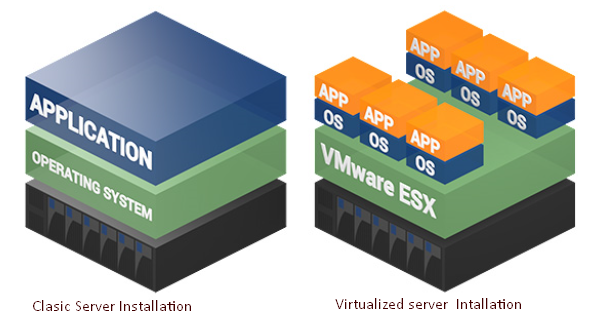
AWS Cloud Services
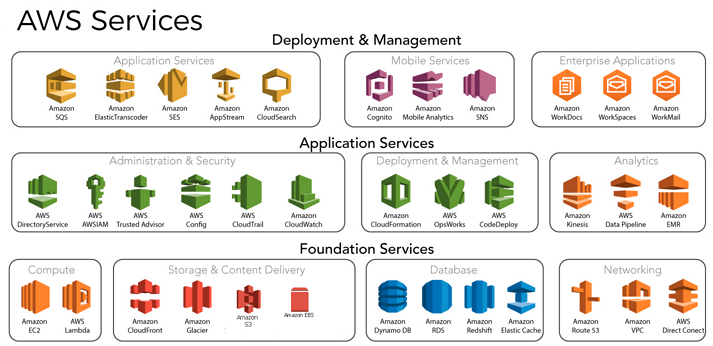
Compute Services
- EC2 or Elastic Compute Cloud – It is a virtual machine in the cloud on which user has OS level control. You can run this cloud server whenever you want.
- AWS Lambda — ThisAWS service allows you to run functions in the cloud.
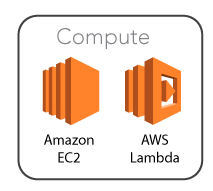
Storage Services
- Amazon Glacier- It is an extremely low-cost storage service. It offers secure and fast storage for data archiving and backup.
- Amazon Elastic Block Store (EBS)- It provides block-level storage to use with Amazon EC2 instances. Amazon Elastic Block Store volumes are network-attached and remain independent from the life of an instance.
- Amazon S3 – With this component one can retrieve the input data sets which are involved in creating cloud architecture and output data sets also can be stored in this component that is the result of the input given.
- Cloud Front – It is a web service; with this you can fastness in distributing the inert and active web content. For example, .html, .php files to clients
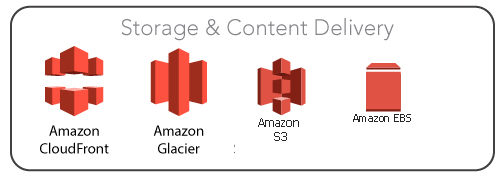
Security Services
- IAM (Identity and Access Management) — IAM is a secure cloud security service which helps you to manage users, assign policies, form groups to manage multiple users.
- Certificate Manager — The service offers free SSL certificates for your domains that are managed by Route53.

Database Services
- Amazon RDS- This Database AWS service is easy to set up, operate, and scale a relational database in the cloud.
- Amazon DynamoDB- It is a fast, fully managed NoSQL database service. It is a simple service which allow cost-effective storage and retrieval of data. It also allows you to serve any level of request traffic.
- Amazon ElastiCache- It is a web service which makes it easy to deploy, operate, and scale an in-memory cache in the cloud.
- Amazon RedShift - It is Amazon’s data warehousing solution which you can use to perform complex OLAP queries.
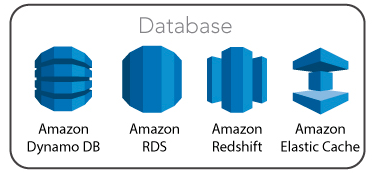
Management Services
- CloudWatch — Cloud watch helps you to monitor AWS environments like EC2, RDS instances, and CPU utilization. It also triggers alarms depends on various metrics.
- CloudFormation — It is a way of turning infrastructure into the cloud. You can use templates for providing a whole production environment in minutes.
- OpsWorks — The service allows you to automated Chef/Puppet deployments on AWS environment.
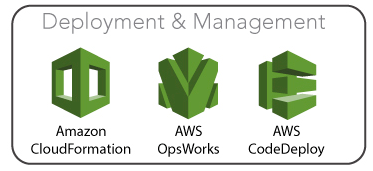
AWS Cloud Features
- Available – Multiple redundancy to address one component failure. Workload is shifted to a operational replacement. Thus, connect resources in geographically isolated locations and also address failures for a complete region during disaster.
- Scalable –Computing resources as per user’s need, on-demand. Offering should be too low as against costs involved in client running workload on own.
- High levels of security – maintain high standards in IT security. Taking responsibility for AWS networking and compute infrastructure security and, relieving customer of these tasks. Applying AWS Shared Responsibility Model which outlines AWS being responsible for the cloud infrastructure only and customer for rest.
- Metering mode– AWS is a self-service system to be used by anyone and with payment only for resource usage. Automated billing as per the usage.
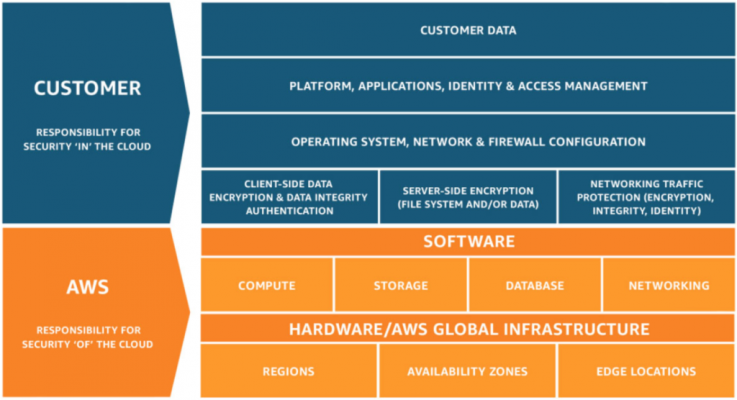
The AWS Value Proposition
| Principle | Concepts |
| Agility | Speed, Experimentation, Innovation |
| Elasticity | Scale on demand, Eliminate wasted capacity |
| Flexibility | Broad set of products, Low to no cost to entry |
| Security | Amazon has acquired many compliance certifications, Shared responsibility model |
Link for free practice test – https://www.testpreptraining.com/aws-certified-cloud-practitioner-free-practice-test
AWS Certified Cloud Practitioner Free Practice TestTake a Quiz
